#Mongolian rider
Text
Mongolian horse archer; pulled from Instagram from a repost account that did not include the og source
#archery#Mongolian rider#Mongolian#mongolia#horse#equestrian#horseblr#traditional riding#horseback riding#mounted archery
1K notes
·
View notes
Note
have you heard of the mongolian wild horse? do you have any centaurs based on those fun little dudes?
You're talking about Przewalksi horses right? Absolutely love those dudes, but haven't actually drawn any centaurs with them, mostly because without those big magnificent heads and manes they look very similar to a fjord horse (which is the primary horse I use as inspiration for Sunny's horse-half!) or just a bay - particularly in my style when I often leave the color some form of grayscale!
I do want to include their markings more when I get more into showing my Mountain Folk centaur culture, as I imagine them with a lot more small wild horse/pony and primitive style markings (shoulder crosses, back lines, and leg stripes) like fjords and mongolian wild horses

However I have been getting better at understanding and using different horse comformations in my designs and I've been doodling a ton of mongolian domestic horse bodies! Particularly since that is more the body-type I think makes more sense to be predominant in my Rider culture.
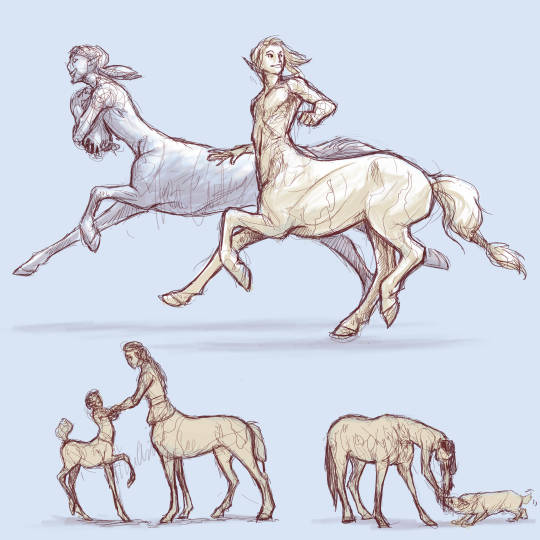
#asked and answered#centaurs#doodles#Centaurs: Mountain Culture#Centaurs: Rider Culture#mongolian wild horse#przewalski's horse
272 notes
·
View notes
Photo

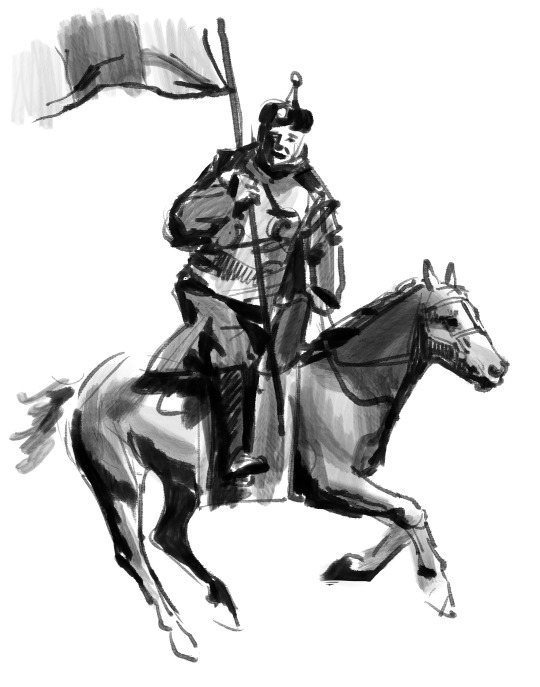
some studies! mongolian horse riders. so many fun shapes.
#horse#horses#my art#digital#procreate#illustrstion#animals#studies#mongolia#mongolian horse riders#horse riding#sketch
2 notes
·
View notes
Text



"And again she looked at Faramir. 'No longer do I desire to be a queen,' she said.
Then Faramir laughed merrily. 'That is well,' he said; 'for I am not a king. Yet I will wed with the White Lady of Rohan, if it be her will. And if she will, then let us cross the River and in happier days let us dwell in fair Ithilien and there make a garden. All things will grow with joy there, if the White Lady comes.'"
- J.R.R. Tolkien, The Return of the King, "The Steward and the King"
@lotrladiessource's lotr ladies week || day 2: women of the north + love || éowyn of rohan
[ID: a picspam comprised of 18 images in desaturated reds, browns, and greens.
1: A close-up of Khulan Chuluun, a mongolian actor, looking straight ahead. She has black hair in two braids, one with red ribbon, and is wearing a red jacket / 2: An antique parchment written over with mantras in mongolian script / 3: Reddish-brown text on a black background reading "I stand in Minas Anor, the Tower of the sun; and behold! the Shadow has departed!" / 4: folded and stacked clothes woven in a traditional central asian style / 5: A field full of wildflowers / 6: The roof of a mongolian ger / 7: The interior of a woven shield / 8: Three przewalski’s horses in a field / 9: Khulan Chuluun, this time in profile. She is wearing a red coat with a furry hood and standing beside a horse / 10: Same format as Image 3, but the text reads "I will be a shield-maiden no longer, nor vie with the great Riders, nor take joy only in the songs of slaying." / 11: Grassy fields / 12: A person, shown from the back, wearing a red leather coat and carrying a sheathed knife. Their hair is in a long braid / 13: The entrance to a mongolian ger / 14: Khulan Chuluun wearing a white shirt and embracing someone who holds her tenderly / 15: Same format as Images 3 and 10, but the text reads "I will be a healer, and love all things that grow and are not barren." / 16: Cloth with a detailed pattern traditionally from central asia / 17: Grassy green hills / 18: A person looking out of a window. They are wearing a brown coat and furry hat, again in a central asian style /End ID]
#lotrladiesweek#lotrladiessource#edits with the wild hunt#brought to you by me#the professor's world#éowyn#lord of the rings#lotredit#tolkienedit#mepoc#described#fc: khulan chuluun#lotr#oneringnet
99 notes
·
View notes
Note
Math, please provide an outline for that Planet Swap AU. This is sending endorphins to my brain. And I need any excuse to write my version but I lack the confidence to do it without some or even any outside validation.
*crawl out of my hole*
Hey hey hey!!! I am back to making text post, I miss them too much lmao.
So! First of all, this planet swap auwas brainstormed with my lovely friend @chemos-factories , who gave me free reign to start yelling about it. So! Without waiting....
Primarch, planet swap edition:
Fulgrim, the flower of Nuceria: To start things up, let's go with the first one we came up with, Fulgrim! He had the horrible, horrible luck to be send on that planet... And to be too pretty for the fighting pit. Since his childhood, he was a pleasure slave for the high rider, sitting like a pretty adornment at their arms as he watched the people fight and dies in the arena. He tried to revolt, and almost succeeded... But he was recaptured in the end. And instead of installing the nails, the bastards on that planet figured out how to take away his biggest weapon: his voice. They removed his vocal cords, rendering him mute. He still is a prideful, elegant, spiteful bastard, and now that he is free, he will never bow down to another master ever again.
Ferrus, the blacksmith of Caliban: Ferrus was very lucky, as in, his pod was found by peasant out in the forest, looking for food. The old tales of Caliban would talk of little children abandoned in the forest by the fair folk, and he was welcomed into their home. His father was a blacksmith, and he learned the trade with him. But always, he was attracted to the forest. It's also where he met a dragon fallen from the sky, with a strange body of metal. He still slayed the beast, but his arms became strange after, covered in metal. Due to his feat, he became a page, and eventually became the most legendary knight of the planet, even his is gruff peasant attitude was often criticize by the noble knights house.
Magnus , the wild witch of Medusa: Magnus grew up very, very lonely. He had a craving, to meet other people, to see others, and yet he was always alone. But from a young age, through his loneliness, object around him would sometime start to glow, and animate themself, become his companions and friends. Magnus himself had no real comprehension of how he did those miracle, they came to him naturally. He would make fire appear in his palms and thunder rumble from the sky. Strange automata, animated by the wrap, would follow him around, and he would sleep under the star, dreaming of far away place, full of green and people.
Perturabo, the builder of Chemos: if anyone was in a perfect environment... It was Pert. He ended up on a planet size game of Satisfactory. Automations, mechanisation, optimisation- all of it were almost a game to him. By the time Big E was there, he had probably created of megapolis that was planet size. Fully self sufficient and automated, he started importing that concept to almost every planet he put under compliance. Think retro-futurism, jetson style. He was also often fighting with the mechanicus, creating quite a lot of tension between the two groups.
Horus, the Gangster of Nostramo: Horus was lucky. As a baby, he was found by people, and adopted, and raised in a loving, if poor family. But he saw the horrible corrupt system around him... And decided that he would be on top. He joined a gang, and climbed the rank, establishing his own empire in blood and fear, becoming the leader of the largest and most terrifying criminal syndicate on the planet. Rules are just suggestion in his eyes. To him, real power is being able to impose your will on others, and he has very few morals and what he would not do.
Corvus, the free spirit of Chogoris: In mongolian tradition, hunting eagles are an important animal. The legend say that baby corvus was found, because a large eagle screamed until the hunters came to discover her. She love the birds, and feel a deep, wild connection to them. Some say that they spy for her, that they would flew above the cities snd come back, whispering secrets. Other said that she could turn into mist and fly away with her beloved friends. In truth, she was mostly using her power, to hide and disappear, and strategy to take down the walled cities.
Konrad, The Oracle of Maccrage: Konrad Curze, this time around, get a happy story. His pod was found, and brought to Konnor and Euten, who immediately adopted the small baby with strange eyes. Quickly, they discovered that their sons had strange power, as their sons would go into fits and see the future, or wake up crying from nightmare of horrible visions. But always, his parents were there, reassuring him: he was burdened with a wonderful gift, a precious power that would help him make the world a better place, and they would always help him fight those apocalyptic visions of the future. As such, he was able to avoid the coup to assassinate his father, and became a symbol of hope and justice on his planet. He is an original, a little weirdo who babble about destiny and doesn't like clothes much, but he is, for once, loved.
Sanguinius, the cryptid of Fenris: the people of Fenris have a legend. Of a winged beastman, living in the mountains. It would slay wolves and bath in their blood, and sometime devour hunter that strayed too far in his territory. All his life, Sanguinius was hunted, feared and hated, by the people of Fenris. He was a wild creature, spoken of in legends, and had to be captured by the emperor himself, to finally become a human, and not a beast.
Mortarion, prince of Prospero: Morty, this time around, get the life he deserve. A kingly positions, love, family, educations... He learned to use his power, never feared them for a minute. But among the intellectual, his interest were seens as odd: he had a strange fascination for flora, and the way plants were linked to the wrap. Under his skilled hands, entire desserts could bloom into brilliant forest, humming with power. Such a strong link was sure to attract mysterious entities....
Lorgar, son of the Emperor on Terra: Lorgar, in a perfect roll of dice, went where Alpharius was suppose to go: right back home. He was raised by the Emperor and Malcador, and all his childhood, had a deep need to please his father, for him to pay attention to him. He is a skilled diplomate, knowing perfectly well how to navigate the high lords and politic of Terra, and would follow any order that his beloved father give him, blindly.
Leman, the Dog of Delivrance: Leman, even at an early age and away from any animals, had the instinct of a wolf. From a very young age, he would listen to the political dissident, and assimilate their belief. The good of the pack was important. They were all, in a way, part of his pack, and he should protect them all. He developed an extreme collectivist streak, and from then on, was a ride or die political activist and extremist. Every human life lost that could be prevented was a tragedy, and every soul mattered. They were all part of his pack. He is fiercely protective of his people, from the most noble of astarte, to the lowest ranked serf. Democratic voting should be applied in all major decisions, and he fully accept to be put in question.
Jaghatai, the barbarian of Baal: Jaghatai had the luck to lend on the mad max world, and he flourished there. He quickly was able to conquer most of his planet, and in general, was a proud road warrior, standing atop a roaring engine and smiling like a maniac, painted in the blood of his enemies. Hemight have encouraged and developed a cult toward motors and machine, wich fully developed into a mechanicus adjacent religion once they joined the imperium.
Rogal, the stolen child of Nocturne: Rogal Dorn was found on Nocturne, and very well loved by his parents, from a very young age. The problem was that, as a pre-teen, a dark eldar raid happened... And Roval was taken in as a slave. The following years were, for him, incredibly harrowing, especially since the drukhari were fascinated by this strange human that would heal fast and grow bigger than others. Still, they did not expect the white haired human to one day brake his chain, escape, and lead the slave of Commorragh into a large, open scale revolt. He was able to escape back into real space, with a large group of slave, and go back home, where he was seen as an hero. From that day onward, he became the terror of the Drukhari, as he swore to purge the galaxy of their race.
Roboute, the patient King of Barbarus: Roboute had... An horrible early life. You know what he endured. But when he was finally able to go down into the valley, to meet up humans, he promissed himself: he would clean the very air of his planet, and destroy the very mountains upon wich the monsters resided. He slowly, surely pushed the populations toward an industrial revolution, establishing large mines into those mountains, figuring out how dynamite itself worked, as he, slowly, prepared to force his own father down into the valleys.
Alpharius and Omegon, the Trickster of Ctonia: The twin were lucky- they were together. Not separated by anything or anyone. They never joined any of the numerous street gang, but instead become some sort of local legend, a vigilante hero, fighting corruption and crimes in the alley and protecting the people. Them being twins gave them an almost supernatural advantage, as they seemed to be everywhere at once, able to see everything. Their ability to pass as normal was also insanely usefull to their crime fighting Endeavor.
Vulkan, the revolutionary of Olympia: Vulkan, from a young age, was close to his sister. But he was also close to all the servent in the palace, and would often sneak out, to talk to the people, and realised early on that his own father was, well... A Dictator. And he did not like that discovery. He was emphatic, and did not see why they needed slaves, or why Calliphone could not rule the city, or why war was necessary! He started talking to the people... And they listened to him. More and more followed him, until he had fermented a full on revolution against his own father. His populist movement grew and spread to other cities, and quickly, his planet became a people's republic, and he had the pride to see his sister, who ha supported him every step on the way there, be elected first Chancellor of Olympia.
Lion, the Tyrant of Colchis: Lion was, in this world, found by Kor Phaeron... But also quickly adopted his way of thinking. He saw religions as a way to stay on top, a tool of power. He would readily conspire with the people around him, seeing assassinations as a completely valid way of asserting dominations. He never actually quite believed in the gods, but saw them as a useful tool, better than any law text to enforce one's will on the masses.
Angron, the Light of Inwit: Angron was dropped into a brutal world. It was not a cruel one per say, but it was one were you had to be dtrong to survive. And Angron, who could feel and take the pains of others unto himself... Could never accept such a situation. Their societydid not have to be as cold as the planet they inhabited, and he fought to establish to change all his life, backed by his beloved grandfather.
#warhammer 40k#warhammer#wh40k#primarch#primarch headcanon#planet swap au#konrad curze#perturabo#fulgrim#magnus the red#horus lupercal#alpharius omegon#mortarion#angron#lorgar aurelian#vulkan#roboute guilliman#sanguinius#ferrus manus#rogal dorn#corvus corax#jaghatai khan#leman russ
259 notes
·
View notes
Photo


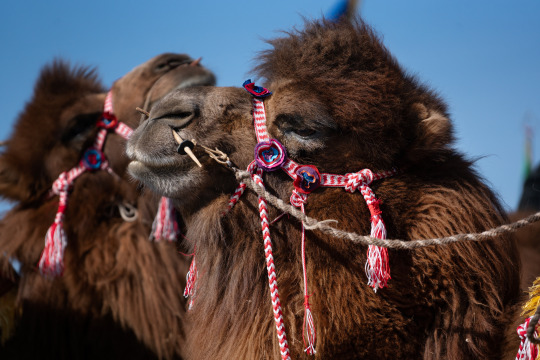





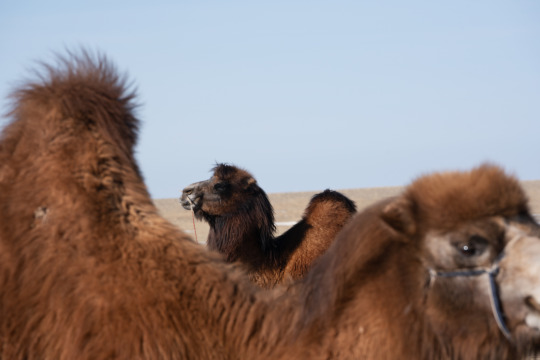

Behold Mongolia's Camel Beauty Contest
Humps and hair. That's the scene in Bulgan Soum, a tiny Mongolian town in the middle of the Gobi Desert about 160 miles north of the Chinese border.
Bactrian camels arrive in all directions on foot, bearing bundled-up riders wedged between their two humps. It's early March. While the sky is cloudless, the wind can pick up quickly. Officially called the Thousand Camel Festival, the crowd that arrives for the kickoff appears to consist of 100 camels.
The two-day festival begins with a camel beauty pageant.
"Mostly young people participate in the Beautiful Couple Contest. But we wanted to represent the older generation of herders," says lifelong herder Enkhbaatar Dashnyam. At 59, he and his wife, Dulamsuren Yunden, 47, have been herding all their lives. They rely on their animals as a form of transportation and sell products from their wool and milk.
The judges are looking for earmarks of tradition; contestants who wear herding decorations and utensils will have a better chance of winning. Both members of this husband and wife duo wear leather boots with upturned tips and fur hats. Enkhbaatar's belt is slung with an ornate knife and a silver bowl.
When visiting a herder, it's customary to be offered milk tea. "Since old times," he says holding a silver bowl, "Mongolians would carry their own cup."
Enkhbaatar and Dulamsuren will showcase two of their most gentle camels, Mashan Huren and Hos Yagaan. Translated, that means "floppy brown one" and "double pink." Their Chewbacca-colored hair, which hangs like a beard, is brushed. Their humps are draped in gold fringe. A harness is kept in place with a nose peg.
Bactrian camels were domesticated thousands of years ago to carry goods and people across Asia. Adapted for desert conditions, the camels can perform Olympic-like feats: carry over 400 pounds on long journeys, withstand 100-degree Fahrenheit summers and -20-degree winters and, when nourished, go without eating and drinking for weeks. Their humps act as fat reserves for energy.
The camels kneel down so Enkhbaatar and Dulamsuren can climb atop. They enter the festival grounds, a dusty square cleared of camels with spectators now packing the perimeter. Music swells over the loudspeaker. After a burst of applause, the pageant begins.
When it's their turn, the couple ride proudly across the square. The beards of their camels billow. Everyone is taking their picture, which matters more to the couple than winning. Enkhbaatar wants future generations — his grandchildren included — to have photographic proof of their lifestyle.
"Since no one lives forever, I wanted to leave our pictures behind for future generations and my descendants," he says, "so they can feel proud. That's what we were thinking when we decided to participate in this contest."
The judges don't announce the winners until the following day. But there's plenty to do at the Thousand Camel Festival until then. Herders sell fermented camel milk, alongside camel toys stitched from felt. Sporting events — like the camel polo tournament and camel race — continue into the afternoon. In 2016, the festival broke a mark recognized by the Guinness World Records for largest camel race. Over 1,100 camels crossed the finish line.
Why this regional craze for the two-humped creature? The origin story is intertwined with Mongolia's transition to democracy.
Under socialism, herding was centrally planned. Herders sold their animal products to the state. With the onset of capitalism in 1990, herders faced new pressures within the free-market economy. For some, their camels were worth more dead than alive.
"Camel herders couldn't get a good amount of money selling products from camel milk and wool," says 35-year-old festival organizer Ariunsanaa Narantuya.
Camel milk and wool wouldn't sell, but camel meat would. Some herders began slaughtering their camels. The festival was created a few years later, in 1997, by the newly formed Camel Protection Association — a local nongovernmental organization — to reverse that trend and protect the desert creature.
Bulgan Soum is now distinguished by its love and stewardship of Bactrian camels.
After the pageant, Dulamsuren tells NPR that she and her husband have 200 camels in their herd. The birthing season is coming. While most newborn camels make it, some don't or are stillborn. When that happens, she says, the mother camel will mourn.
"The mother camel literally weeps with tears in their eyes," Dulamsuren says. "The camel has a big body, but they have a very soft heart."
Dulamsuren has a song for moments like these, one herders have used for generations to soothe camels over heartbreak. The full practice of "camel coaxing," to unite mothers with calves, was captured in the 2003 German film, The Story of the Weeping Camel.
This bond — between herder and camel — is hard to put into words. But you know it when you see it, and the judges definitely noticed. The next day, Dulamsuren and her husband were declared the winners of the 2019 Camel Beauty Pageant.
#these photos are so gorgeous oh my goodness#culture#animals#herding#livestock#clothing#textiles#art#mongolia#gobi desert#camels#bactrian camel
76 notes
·
View notes
Text
Erlking
In European folklore and myth, the Erlking is a sinister elf who lingers in the woods. He stalks children who stay in the woods for too long, and kills them by a single touch.

Pic by Sammycat17 on deviantart
The name "Erlking" is a name used in German Romanticism for the figure of a spirit or "king of the fairies". It is usually assumed that the name is a derivation from the ellekonge (older elverkonge, i.e. "Elf-king") in Danish folklore. The name is first used by Johann Gottfried Herder in his ballad "Erlkönigs Tochter" (1778), an adaptation of the Danish Hr. Oluf han rider (1739), and was taken up by Johann Wolfgang von Goethe in his poem "Erlkönig" (1782), which was set to music by Schubert, among others. Goethe added a new meaning, as "Erl" does not mean "elf", but "black alder" - the poem about the Erlenkönig is set in the area of an alder quarry in the Saale valley in Thuringia. In English translations of Goethe's poem, the name is sometimes rendered as Erl-king.
According to Jacob Grimm, the term originates with a Scandinavian (Danish) word, ellekonge "king of the elves", or for a female spirit elverkongens datter "the elven king's daughter", who is responsible for ensnaring human beings to satisfy her desire, jealousy or lust for revenge. The New Oxford American Dictionary follows this explanation, describing the Erlking as "a bearded giant or goblin who lures little children to the land of death", mistranslated by Herder as Erlkönig in the late 18th century from ellerkonge. The correct German word would have been Elbkönig or Elbenkönig, afterwards used under the modified form of Elfenkönig by Christoph Martin Wieland in his 1780 poem Oberon.
Alternative suggestions have also been made; in 1836, Halling suggested a connection with a Turkic and Mongolian god of death or psychopomp, known as Erlik Chan.
Johann Gottfried von Herder introduced this character into German literature in "Erlkönigs Tochter", a ballad published in his 1778 volume Stimmen der Völker in Liedern. It was based on the Danish folk ballad "Hr. Oluf han rider" "Sir Oluf he rides" published in the 1739 Danske Kæmpeviser. Herder undertook a free translation where he translated the Danish elvermø ("elf maid") as Erlkönigs Tochter; according to Danish legend old burial mounds are the residence of the elverkonge, dialectically elle(r)konge, the latter has later been misunderstood in Denmark by some antiquarians as "alder king", cf Danish elletræ "alder tree". It has generally been assumed that the mistranslation was the result of error, but it has also been suggested (Herder does actually also refer to elves in his translation) that he was imaginatively trying to identify the malevolent sprite of the original tale with a woodland old man (hence the alder king).
The story portrays Sir Oluf riding to his marriage but being entranced by the music of the elves. An elf maiden, in Herder's translation the Elverkonge's daughter, appears and invites him to dance with her. He refuses and spurns her offers of gifts and gold. Angered, she strikes him and sends him on his way, deathly pale. The following morning, on the day of his wedding, his bride finds him lying dead under his scarlet cloak.
Although inspired by Herder's ballad, Goethe departed significantly from both Herder's rendering of the Erlking and the Scandinavian original. The antagonist in Goethe's "Der Erlkönig" is the Erlking himself rather than his daughter. The Erlkönig appears to a young boy in a feverish delirium - his father, however, identifies the apparition as a simple streak of fog. Goethe's Erlking differs in other ways as well: his version preys on children, rather than adults of the opposite sex, and the Erlking's motives are never made clear. Goethe's Erlking is much more akin to the Germanic portrayal of elves and valkyries – a force of death rather than simply a magical spirit.
In Angela Carter's short story "The Erl-King", contained within the 1979 collection The Bloody Chamber, the female protagonist encounters a male forest spirit. Though she becomes aware of his malicious intentions, she is torn between her desire for him and her desire for freedom. In the end, she forms a plan to kill him in order to escape his power.
Charles Kinbote, the narrator of Vladimir Nabokov's 1962 novel, Pale Fire, alludes to "alderkings". One allusion is in his commentary to line 275 of fellow character John Shade's eponymous poem. In the case of this commentary, the word invokes homosexual ancestors of the last king of Zembla, Kinbote's ostensible homeland. The novel contains at least one other reference by Kinbote to alderkings.
In Jim Butcher's The Dresden Files, there is a character called the Erlking, modeled after the leader of the Wild Hunt, Herne the Hunter.
In the author John Connolly's short story collection Nocturnes (2004), there is a character known as the Erlking who attempts to abduct the protagonist.
The New Yorker's "20 Under 40" issue of July 5, 2010 included the short story "The Erlking" by Sarah Shun-lien Bynum.
A version of the Erl-King is mentioned in Zoe Gilbert's Mischief Acts, implied to be a figure related to Herne the Hunter.
In Andrzej Sapkowski's The Witcher saga, the highest leader of the Folk of the Alder elves, Auberon Muircetach, is also known as the Alder King. In the story, he maintains thematic ties to kidnapping: the Wild Hunt, known for abducting humans, is subordinate to him, and he orchestrates the imprisonment of Cirilla.
8 notes
·
View notes
Photo
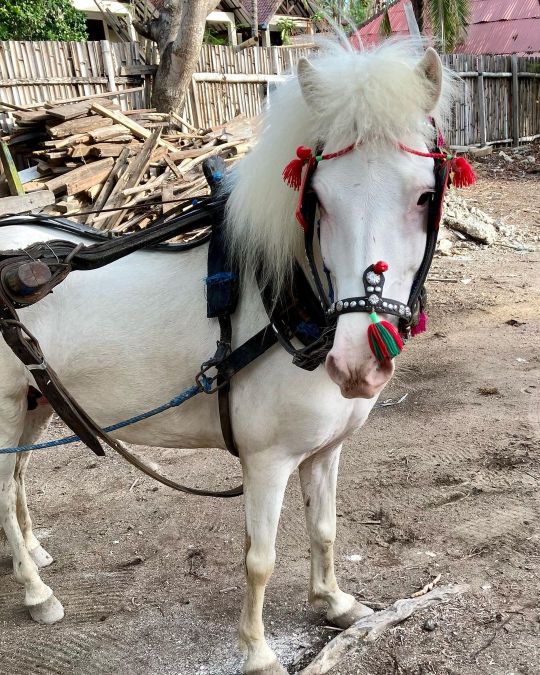
Educational post today! Indonesia has had horses for thousands of years and they are very much a part of their culture. DNA has verified that many local breeds are actually closely related to Mongolian horses. This means several things: 1 - despite being small they are crazy strong. A 12 hand “pony” can easily carry an 85 kg rider without any issues. On the island of Sumba such “ponies” compete in traditional games with adult men riding bareback and throwing spears at one another! And they can pull way more than they can carry! 2 - they drink very little water. Even if provided with fresh, clean water in comparison with “western” horses these local horses drink very little and often refuse to drink it unless it has feed/grass mixed in it. Despite this they are rarely dehydrated. 3 - they can thrive on the poorest quality of feed such that “western” horses would quite literally die. 4 - since Indonesia is thousands of islands which previously there was not a lot of travel between them…distinct “breeds” have developed on each island. Such as the Bali pony, Java pony, Timor pony, Sumba horse, Sandalwood pony, and Sumbawa pony just to name a few. 5 - a large portion of rice, legumes, and wood throughout Indonesia is harvested using animal power; either horses/ponies, cattle, or water buffalo 6 - working horses are common throughout Indonesia (and SE Asia) even being seen in large cities such as Jakarta, Surabaya, Bali, Mataram 7 - local law prohibits the use of motor vehicles on the Gili Islands. This is why our islands depend upon working horses and ponies 8 - Despite being a part of the G20 and a major world economy much of Indonesia is very much still a developing nation. In many areas (including Lombok) education is poor, medical care not readily available (for humans), and poverty is common. To many families their working pony is their only source of income. Also keep in mind unless you are in Java equine vets are non existent…as are feed stores…tack stores…and all the things that are taken for granted. 9 - working horses and ponies have been on the Gili islands since the 90’s and on Lombok for hundreds (if not thousands) of years 🤩😍 https://www.instagram.com/p/CloHgyhP3-o/?igshid=NGJjMDIxMWI=
58 notes
·
View notes
Text
Genghis Khan (Rider) Servant Concept
Class:Rider
Parameters
Strength B
Endurance A
Agility C+
Magical Power C
Luck A
Born Temujin, the man who would come be known as one of the greatest conquerors in all of history. He is perceived many as a great villian and butcher but to others a national hero and great leader. Among servants Genghis Khan stands shoulder to shoulder with some of the most powerful and famous heroic spirits such as Iskandar, Cu Chulainn, and Artoria Pendragon. He qualifies for many classes such as Archer, Lancer and Saber but Rider is by far his best class. In terms of fame, notoriety, and accomplishments he is without a doubt a top tier servant. Personality wise he is proud, charismatic, and larger than life. He considers himself chosen by heaven and all above to unite all nations under one banner. He is eager to experience new things and finds value in others who have skills, beliefs, customs and so on that are not his own. A man who sees only merit and character, looking beyond ones station, and seeing them for their core self. 'A wise beggar with a good heart is worth more than a king placed upon his seat through lineage alone'. Whoever is Genghis Khan's master will find a stalwart and strong servant but he will not follow there orders and may even kill them outright if he does not find them of respectable character or beliefs. He is prone to acting on his own but may take his masters council should they earn his respect.
Skills
Riding A-Genghis Khan is an expert in all vehicles and mounts, especially horses. He even has the potential to ride some phantasmal species and divine beasts.
Magic Resistance D-Can cancel out low level or single incantation spells. As well as protect from low level mental effects
Divinity C-Among the mongol people, Genghis Khan has been deified and associated with an equestrian war god known as Sülde Tngri. This deification represents Genghis Khan's martial character and the more mythical side of himself rather than the historical.
Khan Of Khans A+-A skill that represents Genghis's status as the greatest to hold the title of Khan. It is a composite skill that grants him aa high level Charisma , Tactics , and Golden Rule
Mongolian Martial Arts B-A skill that represents his expertise in the traditional martial arts and skills of his people. Such as horse archery, falconry, and Bokh also known as Mongolian wrestling, and so on. HIs skill in wrestling in particular makes him a dangerous opponent even whent totally unarmed.
Blessing Of Tengri A-It was said in the text 'Secret History Of The Mongols' that a spirit known as Zarin Tengri sent a vision from the great sky god Tengri to the Khorchin mongols, of a cow mooing toward the moon and the words 'Heaven And Earth have agreed to make Tenmujin lord of the nation'. This prophetic blessing is what allowed Genghis Khan to unite his people. It is a skill that acts similar to high ranked Protection Of The Faith and can occasionally grant prophetic dreams similar to the Revelation skill.
Noble Phantasms
Khans Grand Conquest: All Under Heaven is Mine A+ -A crystallization of Genghis Khan's ability to conquer and create the largest contiguous empire in all of history. The noble phantasm allows Genghis Khan to claim areas as his territory. The condition being that he must either win over a majority of the population in that designated area or defeat a figure of authority within that chosen area. Such as using his raw charisma to draw an entire bar to him and want to follow him, allowing him to claim the bar and the nearby area or making the mayor of a town submit to him thus claiming the town itself. Once Genghis Khan has claimed a territory as his own he has a certain level of Authority within that territory, raising his parameters slightly and allowing him to better engage any enemy that enters his territory. This skill also allows him to temporarily use the skills and even mana of others within his territory, representing the khan's propensity to incorporate other cultures, and beliefs into his kingdom rather than quashing them.
Twin White Horses: Divine Steeds Of The Khan A-The twin horses of Genghis Khan who were immortalized in a folktale. They are brothers, and are the Khan's constant companions. The older horse is white with a golden mane while the the younger is the inverse. They are similarly deified along with Genghis Khan and as such are divine beasts, representing the horse as a symbol of mongol culture. The horse and its rider are one, and it is said that the spirit or the soul is called a 'wind horse'. This association with the spirit allows the horses to ride past the veil and into the afterlife temporarily before appearing back in physical space. Though this power is extremely mana intensive. This association with the spirit world also grants them advantages against ghosts and other spiritual beings but not servants. Genghis Khan usually rides one or the other horse but they can also be summoned at the same time to pull Genghis Khan's chariot.
Khan's Tumen: Army Of The Conqueror B+-Genghis Khan had a very specific ordering of troops. He believed that a massive singular army was ineffective. And that multiple smaller armies was more efficient. This noble phantasm is a crystallization of that philosophy and allows Gengis Khan to summon a entourage of his elite Calvary up to 1000 strong. Each one of them is a minor heroic spirit in there own right and have average parameters of C. Though it is not an army as grand as Iskandar's or similar noble phantasms it has quality over quantity. However, summoning such a massive force of minor heroic spirits requires immense amounts of mana. So it is often employed sparingly.
7 notes
·
View notes
Text
Aph Mongolia appearance headcanons and other headcanons
This is what I'd say he would most likely look like if I were to picture him as a person rather than a 2d character. This is after hours of watching through videos of Mongolian people. So news, street interviews, podcasts, youtubers, wrestling matches, music performances, videos of nomadic people in the countryside, videos of people in Ulaanbaatar and other major towns etc.
This sounds pretty dramatic lol, I haven't just sat through hours of this in one go, I've been interested in Mongolia as a country for a while so of course over the years I've been interested in Mongolian media too (I am not stalking Mongolian people pls)
I just want to say that Mongolia, like all countries, is incredibly diverse in the way people look. I've seen some Mongolians who could honestly pass as someone who's South East Asian, others who have the more stereotypical Mongolian look, others who could pass as Korean/broadly East Asian and others who look a bit more Turkic. This isn't me trying to put Mongolians into one box but this is what I think he'd look like based off of what I've seen over the years.
Some of these headcanons will not be totally accurate too and I just put them there because I like them lol. Sorry!
When it comes to his face shape, I think he'd have a bit of a square jaw/masseter muscles that are developed slightly more compared to others. This is because of the traditional foods Mongolians eat. Traditional Mongolian foods are quite hard to bite down on and chew, and this helps with tooth/jaw development. I'm not saying he has a Chad jaw lol but it's a bit more square shaped than v line shaped if that makes sense.
When it comes to his eyes, they are evenly spaced/widely spaced. I haven't seen many Mongolians with close set eyes, they tend to be evenly set/ wide set. I like to say he has feline looking eyes because of the way Chinggis Khan was described by the Indian historian Juzjani "A man of tall stature, of vigorous build, robust in body..... with cat's eyes, possessed of great energy".
That was probably just them saying he had monolids but let me just have him be a catboy (man?) okay.... Also sorry, gonna be boring but his eyes are dark brown to me. I know Mongolians can have light eyes and hair but a majority of them don't.
Also thick eyebrows. Yesh.
Prominent cheekbones. Obviously.
Btw I headcanon him to look like he's in his late 20's, 27/28 ish.
When it comes to his nose, I think he has the classic Asian button nose and its a bit upturned (dunno if that makes sense). However I've noticed that nose bridges are more common in Mongolians so their noses aren't always so flat looking from a side on view?
When it comes to his lips, I headcanon them as being on the plumper side. No reason why, just like it lol.
His skin colour, I'd say it's tanned but not as tanned as it used to be, obviously because of government work but he does still go out to the countryside often. His cheeks also used to be a lot more ruddy when he was purely a nomad, some of the redness is still there but its not as obvious as it used to be. I think his cheeks can go quite rosy when it's cold/there's a dramatic temperature change.
I think his face is still flat-ish like most East/North East Asians. I know someone's gonna ask "how can he have a flat face when you just said he had prominent cheekbones??" well they aren't mutually exclusive.
I think his skin is naturally a bit dry. I've heard Mongolians say that Mongolians tend to have drier skin because of the climate so yeah.
Also I headcanon him to have two face scars bye its so hot,,,. I saw a hetalia artist draw him with them and fell in love instantly and there were two other hetalia artists who drew steppe nations with face scars. One of them drew aph huns with a face scar and another one drew aph Xiongnu with a face scar so yeah all major steppe riders have face scars now this is my canon 😍
When it comes to his hair, long, thick and dark brown, bordering on black, looks copper-y in the sunlight.
Also I'm sorry but I headcanon him as a tol man (6') 😢 I attribute this to his rapid growth as an empire. Not truly accurate as most Mongolians aren't really that tall but shhhhh
I've already touched upon these aspects of his appearance in different posts but I'll just get into it again for the sake of it.
Body wise I think he looks like this (at his peak when he's like, participating in sports, yes he is a jock...)
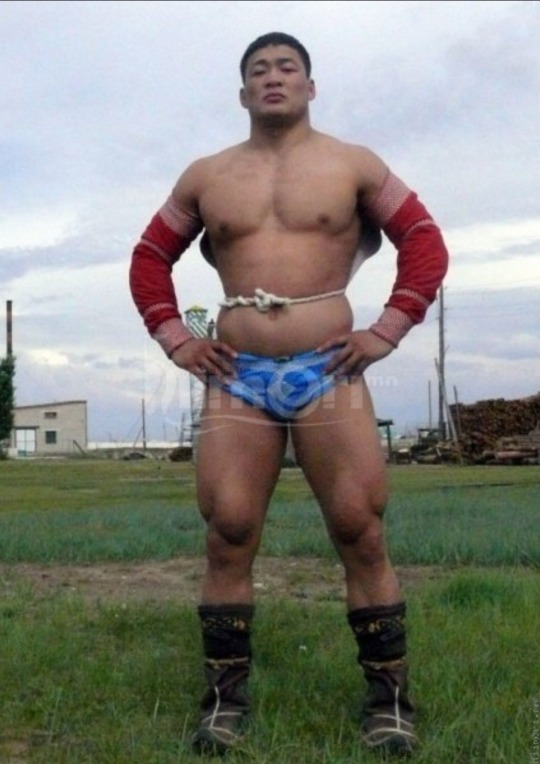
🥴
I also talked about what I think he wears on a regular basis in another post about East Asian fashion headcanons but I'll put it here again anyways plus it might have changed:
I don't think there's a colour he wouldn't wear but he tends to go for shades of blue/brown/beige/cream/black. Fave colour to wear is probably blue. The colours he wears tend to be darker in shade but he's not repulsed by brighter or bolder colours.
He wears his clothes more for function than fashion, not that he can't be fashionable and what he wears on a daily is a random mess haha not at all, but on a day to day basis he's more concerned about what will keep him warm/cool rather than what looks good.
Probably has a lot of nice wool/yak wool/camel wool/cashmere items of clothing. Makes some of his wool hats and scarves himself.
Wears accessories sometimes, I mean he most likely has his ears pierced (Mongolian men back in the day had pierced ears and wore earrings). Probably has some leather bracelets and necklaces with the soyombo symbol or Ulzii symbol (buddhist endless knot symbol). Doesn't really care about if what he's wearing is gold or silver but he tends to lean towards silver. Also necklaces with a horse pendant/rings with a horse design?? Yes 🐴 Probably has some bracelets/necklaces braided with horse hair in the design. Often wears boots.
Other headcanons:
Voice headcanon: I headcanon his voice to actually be on the soft side! Probably emphasised by the fact that he speaks a bit more softly but it's pleasing to listen to. In a lot of the videos I've watched of Mongolians, they tend to speak a bit softly? Unless I'm on a meme page where everyone in the videos are hollering lol.
I think he can sing quite well, I mean you need to have a good range to pull off a Mongolian long song. Probs shouldn't make him try to sing pop songs though.
Obviously can throat sing and is excellent at it this is out of the question ☝️‼️
He can braid his hair pretty quickly considering how long it is
Enjoys watching K-dramas and even C-dramas lol (Don't tell Yao). Also really likes Turkish dramas??
He has a pair of practical glasses for when he goes into the country but also switches between that and contacts for when he goes out there (breaking glasses is a pain in the ass)
Has a bunch of animals but obviously he cannot take care of them all the time so he has some people take care of them.
Diverse music taste but has a tendency to enjoy rock/metal!
Pretends like he doesn't know what Kpop is to annoy South Korea (he secretly does like some Kpop shhh)
Likes watching sumo on his TV and sometimes when he visits Japan, they both go and watch it together in real time (probably likes rubbing in how good Mongolians are at sumo to him, but then all Japan needs to do is mention the failed Mongol invasions of Japan to shut him up haha)
Actually enjoys bickering with China about stupid things and will send him videos of himself consuming ungodly amounts of dairy to make fun of China's lactose intolerance (Mongolians are genetically lactose intolerant but they've been consuming it for so long now, their gut has basically adapted to it. Really interesting)
Tibet helps ground him when he's feeling lost/worried <33 emotional support human fr. Often sends gifts to Tibet and checks up on him, likes getting hugs from Tibet.
Not as close to the central Asians as he feels he should be which he feels a bit of regret over
Though he and Kazakhstan do talk as they are *almost* neighbours. There's Kazakhs in Mongolias western province who have preserved traditional Kazakh culture before Russificafion (they essentially ran away from it) so he likes going there with Kazakhstan. Also Mongolia is literally a direct ancestor of Kazakhstan so yeah lol (daddy??)
For the love of God do not let him and Russia drink together alone because they do not tell each other to stop
Sharp shooter, even with a gun.
Lowkey hates the fact he has to wear glasses but also he's become attached to them??
Obviously still very much enjoys and feels comfortable with the nomadic lifestyle but ngl it feels good to just be lazy sometimes
Sends the groupchat (idk like East Asian gc?) videos of like. Baby goats or something when there's an argument going down in an attempt to calm it. Has like a bunch of recordings on his phone of animals it's eating up his storage!
He can be quite funny when he wants to be and its made more funny by the fact that he's usually reserved in what he says and is quite deadpan.
I think him being reserved in what he says gives off the impression that he has a shy persona but introverted/silence doesn't necessarily mean shy. He just is more observant during conversations and uh he has a lot of thoughts in his brain‼️ (aka, he's still trying to mentally recover from the fall of the Yuan chsxh JKJK)
Isn't actually bitter or like. Emo about his fall from grace. I'm sure he has melancholy moments, not just about his empire era but just his history as a whole (I headcanon that his childhood was insane xhjd). But honestly he knows it could have been so much worse and he very well could have ended up dead so the fact that he's still around is a testament to his resilience
He tries to be optimistic about things but with his current government it can be hard LMAO.
I don't headcanon him as like mega depressed about things all the time but eh life gets to us all (esp when you're landlocked between Russia and China haha)
When he gets drunk he gets really funny and then passes out
If he's eating something while talking to someone, he'll offer them some of his food (yassa laws who??)
Obviously very hospitable, you enter his home/apartment/ger and BOOM you don't even have to ask he's already made food and tea for you
Is surprisingly quite respectful of people's feelings/boundaries (I mean compared to when he was a teenager at least bahah)
Can be a bit superstitious. So if someone starts whistling indoors for example, he'll either get a bit on edge or straight up tells them to stop
Is still physically active, not doing anything for too long bores and kind of depresses him.
He also likes doing things that stimulates the mind too, so, chess, sudoku, mahjong, puzzles, reading etc. Yes he's a jock but he's a smart one! ☝️🙏
#hetalia#hetalia world twinkle#hetalia world stars#hetalia world series#Hetalia mongolia#aph mongolia#Hws mongolia#Hetalia China#Hws China#Aph China#hetalia south korea#aph south korea#hws south korea#Aph Japan#Hws Japan#Hetalia Japan#Aph Russia#Hws Russia#Hetalia Russia#Aph Tibet#Hws Tibet#Hetalia Tibet#aph kazakhstan#Hws Kazakhstan#Hetalia Kazakhstan#This is soooo long omg sorry.
24 notes
·
View notes
Text
Lemme show y'all the Crowning achievement of my Spiralverse HCs, which is this of every world's numerous dialects, made purely so that I can know which OC speaks what!
(Sidenote: as per usual, worlds that're completely original are in purple, worlds that're simply reimaginings are in pink, and worlds that I simply renamed are in green!)
Lemuria: Lemurian, Eldritchic
Heroica: Heroic (transatlantic accent)
Empyrea: Gachachen (Armenian), Alphoili ena (Georgian), Kalamari (Azerbaijani)
Grizzleheim: Bjørnsk (Danish), Ulvsk (Norwegian), Korpska (Swedish), Villisvínka (Icelandic)
Darkmoor: Vampyruiu kalba (Lithuanian), Huntsi keel (Estonian), Notekšu valoda (Latvian)
Polaris:
Morçais (French), Manchotasque (Monégasque)
Nesti yazyk (Russian), Mors’kyy levska (Ukrainian)
Tülkizaq (Kazakh), Tyulencha (Uzbek)
Moosekha (Yakut)
Gamassa:
Chessova- Obsidiūm, Ivornish, Garnissi
Suitsia- Heartesh, Spadettic, Clubivian, Diamantine
Tilasia- Dicenese, Dominocco
Tarotte- Swordinic, Pentaclese, Chalusian, Wandirine
Karamelle: Mausch (German), Mollands (Dutch)
Avalon: Arthraeg (Welsh), Sionhlig (Scottish Gaelic), Broclge (Irish Gaelic), Weasewek (Cornish)
Marleybone: Marlish (English), Sions (Ulster Scots), Loscannge (Irish)
Monquista: Tiellano (Spain Spanish), Cálidês (Portuguese), Verdalan (Catalan)
Coloratura: Purpurīm, Caerulic, Viridian, Flavish, Aurantesse, Rubinese
Dragonspyre: Ogŭnski (Bulgarian), Kriloski (Serbian)
Vitalia: Janeize (Genovese), Altoscan (Tuscan), Trinitalian (Sicilian), Purapoletano (Neapolitan)
Aquila: Aetóniká (Greek), Vulturīm (Latin), Trojan (Turkish)
Mirage:
Qhati (Levantine Arabic), Jamalījī (Gulf Arabic)
Rubâhsī (Fārsī), Mushrī (Darī)
Yılanili (Hittite), Faresiçe (Istanbul Turkish)
Babumerian (Sumerian), Sehê bejîdî (Kurdish), Ealiawi (Bedawi)
Krokotopia: Krokotopian (Ancient Egyptian), Hedjiin (Nubian), Manremənkhēmi (Coptic)
Zafaria:
Manwiza (Manyika), Mbidau (Ndau)
Sepiltwa (Setswana), Selaminko (Sesotho)
Indlodo (Mopondo), Imvumbu (Thembu)
KwaIbhubelu (KwaZulu-Natali Zulu), Intshaal (Transvaal Zulu)
Amakhanle (Ndebele), Óbhéjanele (Matabele)
Mooshu:
Guānyù (Mandarin)
Akago (Japanese)
Sanguk-eo (Korean)
Hüyyol (Mongolian)
Dbaas (Tibetan)
Qīng wá (Cantonese)
Vajong (Hmong)
Rajah:
Bāghala (Bengali)
Ṭālpiṉil (Tamil)
Mōrabi (Punjabi)
Kosūr (Kashmiri)
Sing-haya (Assamese)
Yago:
Tiếng Đồi (Vietnamese), Phéasa Veal (Khmer), Phéasa Rồng (dragon-riders)
Phasa Lm (Thai), Phasa Thidin (Laotian), Raybhasa (Burmese), Phasa Kyaal (helephants)
Bahasa Bunga (Indonesian), Bahasa Pasir (Malay), Tagbato (Tagalog)
Wallaru: (to be updated)
Celestia: Vosa vaka-Keresi (Fijian), Reo Ma’o (Tahitian), Lea fakaika (Tongan), Te reo Kapua (Maori)
Skull Island:
‘Ōlelo Wai (Hawaiian), Gagana fa’a Afi (Samoan), Troggy, Cohuatl (Nahuatl)
Ratgin (Pidgin), Papiatubarão (Papiamento), Krabole (French Creole), Flamiwa (Jamaican Patois)
Cool Ranch: Coolish (Southern accent), Biuan (Siouan), Pollish (Mexican Spanish)
Aviarios: Avirican (Northern/Western AmE)
Coatlán: Cohuatl (Nahuatl), Ocemuri ra’ícha (Tarahumaran), Cochojío (Huarijío)
Khrysalis: Hivonic, Burronian, Sluggish
Others: Common tongue, Neviit (Hebrew), Kalines (Romani)
5 notes
·
View notes
Text
Update on the mamluk coat that caught my attention because there's an extant cotton fragment with the same pattern: I am growing increasingly convinced that it's related to the terlig after remembering it has a similar appearance to a Chinese garment I saw (tieli), and poking at sources they mention wearing of "Tatar coats" (in sources that seem to be using Tatar and Mongol a bit interchangeably) but come shirt of actually saying "yes, the fact that this is a cross front garment sometimes depicted with a voluminous skirt and shown on horse riders that appears close to a time where Mongolian culture was a player in the region means it might be related to this" which I don't think is admissible enough for me to edit the Wikipedia article on it even if I say it's only a possible connection
#Cipher talk#Part of this might be that 1958's Mamluk costume is of the contention that the Tatar coat was banned? And that we don't have surviving#Depictions?#But there was continued cultural exchange and contact with Tatars and Mongolians past that even just because.#The Ilkhante continued to exist after the 13th century into the early 14th#And the Timurids continued many elements of Mongolian dress from then#But looking at that folio and the garment and related garments like the Jama they definitely look related#I understand looks can be deciving but given there was Mongolian influence in that era (you can tell basically just by looking at the#Artstyle) it seems VERY likely
10 notes
·
View notes
Text
Ling Shan Hermit: When you become accustomed to a certain lifestyle, you become vulnerable.
When you become accustomed to a stable life, you become vulnerable. You become dependent on it, and any minor change can easily knock you down. One of the best fruits of modern civilization is that it has made us incredibly weak. If you were thrown into the wilderness now, what could you do? You are accustomed to driving, to elevators, to food delivery, to the idea that a blue flame will burst out like a lotus just by flipping a switch. You have almost become unable to walk (climbing two floors would leave you panting), unable to cook, and in the wild, you may not even be able to start a fire. Not to mention fighting with wild beasts.
In the Ming Dynasty, the cavalrymen who had once defeated the Mongolian iron riders also began to lose their fighting power under the comfortable life.
Perhaps you have guessed what I am going to say. What I want to say is, if you are a Buddhist practitioner, you better not let your life be too comfortable, otherwise, you may become very vulnerable. You better not get used to anything. Some things are easy to possess, but it is very difficult to get rid of them. You can try to get rid of one of your habits. You might be able to get rid of it for a moment, but within a minute you find it's come back again.
In Buddhism, some practitioners are encouraged to practice "dhutanga" (ascetic practices), which has many specific requirements, such as not always sitting in one fixed place. This makes a lot of sense. I remember once when we were practicing the Dharma, I saw someone sitting on my cushion - the one I always use for meditation - and this made me very upset. We all think that things we use regularly are ours, and this is one of the sources of our suffering. If you sit here today and there tomorrow, you are less likely to think that this place or that place is yours, and therefore, you will not be upset if someone else takes your place. This is very important. In fact, no place belongs to you. In Tibetan Buddhism, there are similar rules, yogis are not allowed to stay in one place for too long, because that can lead to attachment and obsession. Even if you do not intend to practice asceticism, I do not think that knowing these things is meaningless to you.
I know that many practitioners, at the beginning, when conditions were not that affluent, practiced very well. They could almost eat any food, but because they practiced well, they began to receive offerings. Then, they might want to improve their lives a bit. They ate better than in the past, and then they began to dislike some foods and like other foods. That's how they became vulnerable. In the past, food would not bother them, but now, if they cannot get a certain food, they are almost unable to meditate. This is the problem we are facing.
Without a doubt, practice will rapidly increase your blessings, but whether the gradually increasing blessings are good or bad for you depends on yourself. You might gradually become picky and easy to hurt, if you do not know how to use the blessings. For example, I am very fragile now because I have become accustomed to people's respect. Almost in all situations, I am treated as a very important person. You don't have to go too far, just showing that you don't care about me in particular can hurt me. Of course, I will disguise this very well. You will only see me smiling, not me being angry. But I know I am upset.
Most importantly, you cannot hide from yourself, you need to always know your own state. It's very good if you know and admit that you are upset because of others' disregard. But most people don't want to admit this. I think I understand very well why people become corrupt when they gain power. Even if he is a very good practitioner, as long as he has not reached the point of non-retrogression, he cannot guarantee that his mind will not change under such circumstances, let alone ordinary people. Of course, I'm not saying that we should forgive them. Generally, the changes in our hearts are very subtle, and by the time you notice them, it may already be difficult to reverse.
My intention is to remind practitioners of what can make you vulnerable. This way, you can try to avoid it. But the most important thing is not to deceive yourself. If you deceive yourself, you will help cover up your own weaknesses, you will think you have no weaknesses. This way, your weaknesses will become more and more serious until they are irreparable. Do not try to cover up your own problems, that will only make the problems worse, open up to yourself.
This article was first posted on the Ling Shan Hermit blog on March 16, 2010. All rights reserved, please do not infringe.
Copyright Notice:All copyrights of Ling Shan Hermit's articles in Simplified and Traditional Chinese, English, and other languages belong to the natural person who owns "Ling Shan Hermit". Please respect copyright. Publishers, media, or individuals (including but not limited to internet media, websites, personal spaces, Weibo, WeChat public accounts, print media) must obtain authorization from Ling Shan Hermit before use. No modifications to the articles are allowed (including: author's name, title, main text content, and punctuation marks). We reserve all legal rights.
灵山居士:当你习惯了某种生活,你会变得脆弱
5 notes
·
View notes
Text
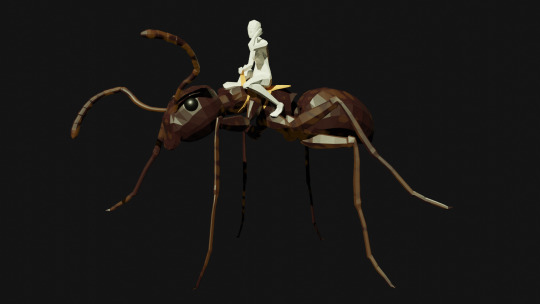
Found my picture folder for this old project I really wish I could continue. It's an ant rider. I haven't yet decided if the ant is giant or the rider tiny.

I remember crying over the cloth physics and not understanding what I was doing at all, not getting the results I wanted!
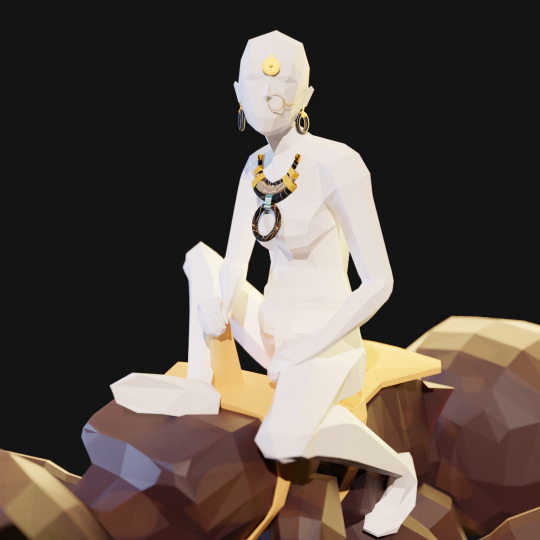
In the end I had almost more fun creating the jewels for her.
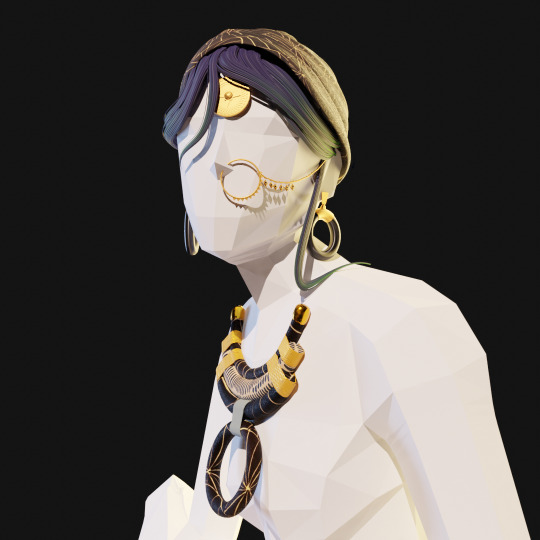

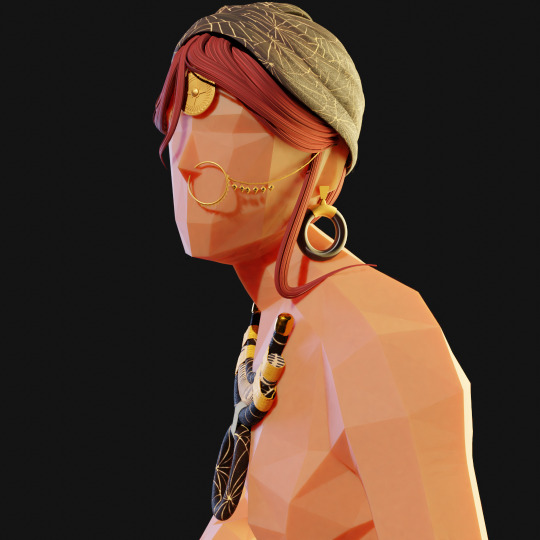

Sadly the main piece of metal didn't load on those renders due to some mistake in my materials.
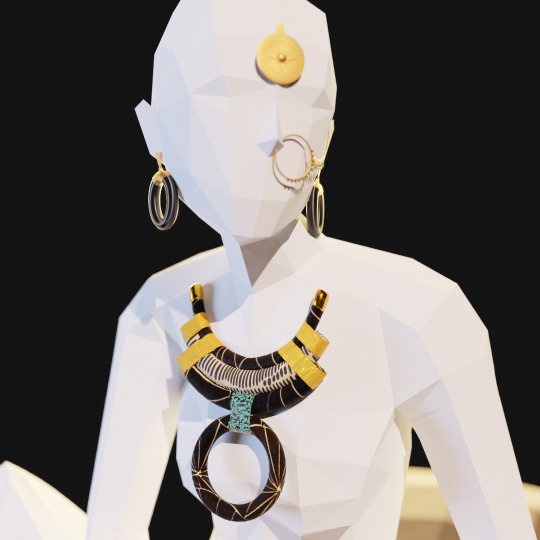
You can see it here though.
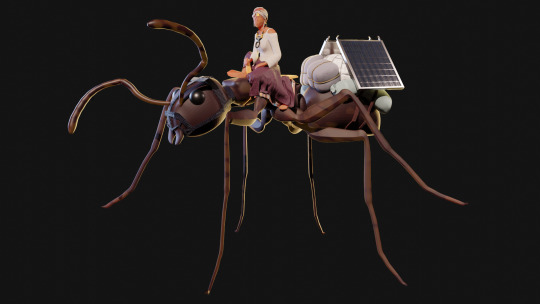
Here she is with a halter on her ant and solar panels over her bags. The final version I even did little pompoms on the halter. I really lost myself to stupid details in the end. I was still learning.
If you're curious, this is how I did the ant. It's from a mongolian ant.

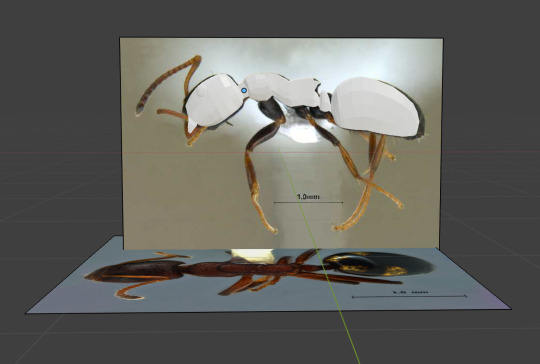

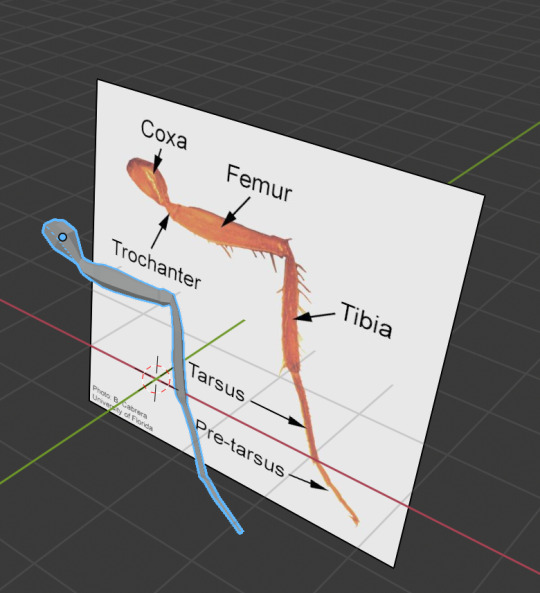
22 notes
·
View notes
Text
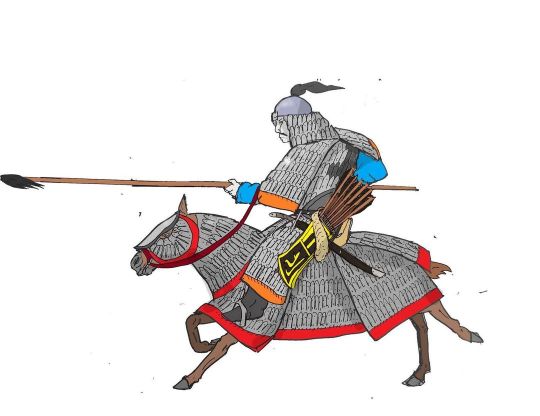
HEAVY MONGOL LAMELLAR LANCER
The heaviest armour the Mongols wore in the 13th century was metal lamellar for horse and rider. Lamellar is made of many small, metal plates (lamelles) pierced with holes. Through each of these holes, string (silk in some cases) was run through it. And so on and so on, until achieving rows of metal plates strung together. The final result is a flexible and durable amour.
Both man and horse could be adorned in it, though the historical sources are rather clear this was how the wealthy dressed for war. It was a lot of material to cover both man and horse, and no small investment. Only a small percentage of the Mongol army was as well equipped as this, and we might speculate that was restricted to the khan, generals and bodyguards (keshig).
Note as well, that all Mongol cavalry (and most medieval cavalry in generally) were firstly horse archers. Even our most heavily armoured Mongol warrior's primary weapon was a bow.
You can watch my new video on Mongol heavy cavalry and armours here:
5 notes
·
View notes
